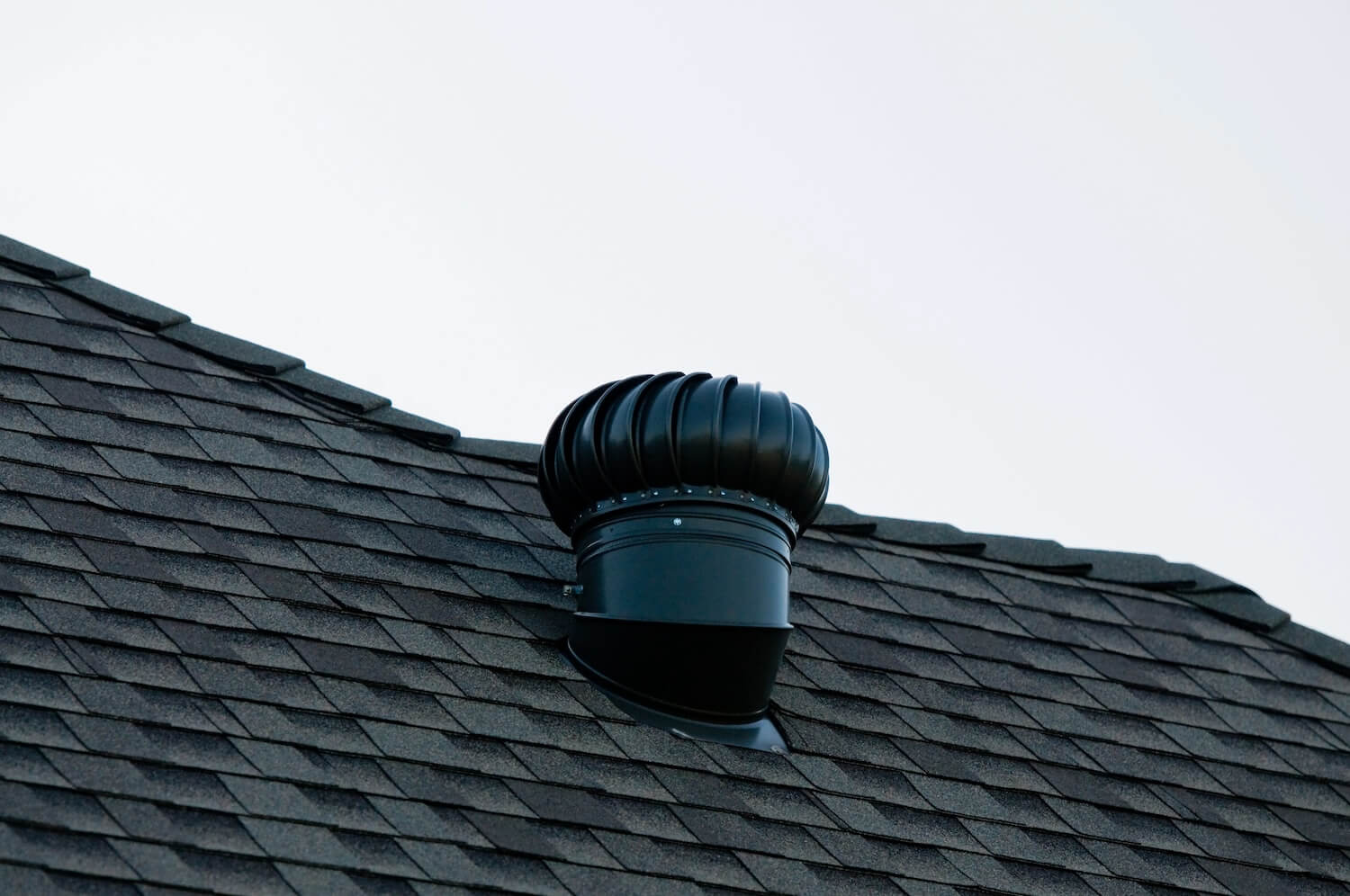
Understanding Roof Ventilation
Roof ventilation is a fundamental component of building design, facilitating the exchange of air within the attic space and roof system. It involves the strategic placement of intake vents, typically located at the lower edges of the roof, and exhaust vents positioned near the ridge or high points. This configuration fosters a continuous flow of air, allowing for the expulsion of hot, stale air from the attic while simultaneously drawing in fresh, cooler air from outside.
The Importance of Ventilation
Temperature Regulation
Central to the functionality of roof ventilation is its role in temperature regulation. Attics, especially during the scorching summer months, can swiftly transform into veritable ovens, with temperatures soaring well above the ambient outdoor conditions. Without adequate ventilation, this trapped heat infiltrates the living spaces below, exacerbating discomfort and necessitating increased reliance on mechanical cooling systems. By facilitating the expulsion of hot air and the influx of cooler air, roof ventilation helps maintain a more consistent indoor temperature, thereby reducing the burden on air conditioning units and enhancing overall comfort.
Moisture Control
Beyond temperature management, roof ventilation also serves as a crucial mechanism for moisture control. The absence of proper ventilation can lead to the accumulation of moisture within the attic space, fostering conditions ripe for mold and mildew growth, as well as structural deterioration. Condensation, in particular, poses a significant threat, manifesting as water droplets on the underside of the roof deck and potentially causing rot and decay over time. By promoting adequate airflow, ventilation mitigates moisture buildup, safeguarding against costly repairs and preserving indoor air quality.
Preservation of Roof Integrity
The structural integrity of a roof is intrinsically linked to its ability to withstand environmental stressors such as heat and moisture. Without proper ventilation, these factors can accelerate the degradation of roofing materials, leading to premature aging and compromised performance. By regulating temperature and moisture levels, roof ventilation plays a pivotal role in extending the lifespan of the roof, thereby safeguarding the homeowner’s investment and averting the need for premature replacements.
Types of Roof Ventilation
- Ridge Vents: Ridge vents are installed along the peak or ridge of the roof and serve as exhaust vents, allowing hot air to escape from the attic. Their design facilitates a continuous ventilation pathway, ensuring efficient airflow and heat dissipation across the entire roof structure.
- Soffit Vents: Positioned along the underside of the roof overhang or eaves, soffit vents function as intake vents, drawing in fresh outdoor air. When paired with ridge vents, they establish a balanced ventilation system, optimizing airflow and minimizing the risk of hot spots or moisture accumulation within the attic.
- Gable Vents: Gable vents are typically located on the gable ends of the attic and serve as additional exhaust vents. Particularly effective in homes with gable roofs, these vents facilitate airflow and help alleviate pressure differentials, thereby enhancing overall ventilation efficiency.
- Static Vents: Static vents, also known as roof louvers or box vents, are surface-mounted exhaust vents that rely on natural convection to expel hot air from the attic. While less technologically advanced than other ventilation options, they offer a cost-effective solution for homes where more elaborate ventilation systems may not be feasible.
Installation and Maintenance
Proper installation and ongoing maintenance are imperative for maximizing the efficacy of roof ventilation systems. Here are some key considerations:
Balanced Ventilation Design
Achieving a balanced ventilation system requires careful consideration of intake and exhaust vent placement, as well as sizing to ensure optimal airflow distribution. Professional contractors can assess the specific requirements of each home and tailor ventilation solutions accordingly, thereby optimizing energy efficiency and indoor comfort.
Regular Inspection and Cleaning
Routine inspection and maintenance are essential for preserving the functionality of roof ventilation systems. Homeowners should periodically check for debris or obstructions in vents, inspect for signs of damage or deterioration, and ensure that insulation materials do not impede airflow. Additionally, scheduling professional inspections can help identify potential issues early on and prevent costly repairs down the line.
Roofing Material Maintenance
In addition to maintaining ventilation components, it’s crucial to uphold the integrity of roofing materials themselves. This involves regular inspections for signs of wear or damage, prompt repair of any compromised areas, and proper insulation to minimize heat transfer between the attic and living spaces below.
Professional Installation
Professional installation is a cornerstone of effective roof ventilation systems, ensuring that they operate at peak efficiency and provide maximum benefits to homeowners. While it may be tempting for some homeowners to undertake installation as a do-it-yourself project, the complexities of ventilation design and the potential consequences of improper installation underscore the importance of entrusting this task to certified professionals.
- Expertise in Airflow Dynamics: Certified roofing contractors possess specialized knowledge and training in airflow dynamics, allowing them to design ventilation systems that optimize air circulation and heat dissipation. They understand the principles of convection and airflow resistance, enabling them to select the most appropriate vent types, sizes, and configurations for each unique home environment.
- Compliance with Building Codes: Professional installers are well-versed in local building codes and regulations governing roof ventilation. By adhering to these standards, they ensure that ventilation systems meet safety requirements and performance benchmarks, mitigating the risk of code violations and potential liabilities for homeowners.
- Tailored Ventilation Solutions: Every home presents its own set of challenges and requirements when it comes to roof ventilation. Professional contractors conduct thorough assessments of attic spaces, considering factors such as roof pitch, insulation levels, and existing ventilation infrastructure. Based on these evaluations, they develop customized ventilation solutions tailored to the specific needs of each property, thereby optimizing performance and energy efficiency.
- Optimal Vent Placement and Sizing: Achieving a balanced ventilation system requires careful consideration of vent placement and sizing to ensure adequate airflow throughout the attic space. Professional installers possess the expertise to determine the optimal locations for intake and exhaust vents, as well as the appropriate sizes to accommodate airflow requirements. This meticulous approach helps prevent issues such as air stagnation, hot spots, and moisture buildup, ensuring consistent performance and comfort.
- Integration with Roofing Components: Roof ventilation systems must seamlessly integrate with existing roofing components to maintain the structural integrity of the roof and prevent water infiltration. Professional installers are skilled in the proper placement and sealing of vents to minimize the risk of leaks and water damage. They also take into account factors such as roof slope, flashing installation, and attic access points to ensure a cohesive and watertight system.
- Warranty Protection: Many roofing manufacturers offer warranties that may be contingent on proper ventilation installation. By hiring certified professionals to install ventilation systems, homeowners can rest assured that their warranties remain valid and that they are protected against potential issues related to ventilation performance. Professional installers also typically provide warranties on their workmanship, offering additional peace of mind to homeowners.
- Safety and Liability Considerations: Roofing work inherently carries risks, including falls, electrical hazards, and structural collapse. Professional installers undergo extensive safety training and employ industry best practices to mitigate these risks and ensure a safe working environment. Moreover, reputable contractors carry liability insurance, protecting homeowners from potential damages or injuries that may occur during the installation process.
Conclusion
In conclusion, proper roof ventilation stands as a cornerstone of effective home maintenance, offering a myriad of benefits ranging from temperature regulation to moisture control and structural preservation. By facilitating the exchange of air within the attic space, ventilation systems help create a more comfortable, energy-efficient living environment while simultaneously safeguarding against costly repairs and structural damage. Homeowners are encouraged to prioritize professional installation and regular maintenance to ensure that their roof ventilation systems operate at peak efficiency year-round. With the right approach to ventilation, homeowners can stay cool, stay dry, and enjoy the peace of mind that comes with a well-ventilated home.










